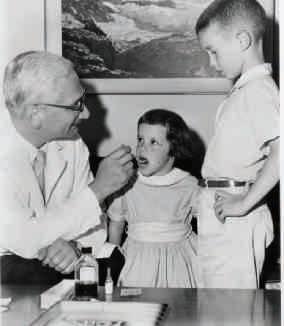
3 minute read
I Wish I’d Been There
THE EIGHTH OHIO VOLUNTEER INFANTRY AT GETTYSBURG
BY JARED WILLIAMS
On the afternoon of July 3, 1863, Robert E. Lee sent his Army of Northern Virginia into the center of George Gordon Meade’s Army of the Potomac on the outskirts of Gettysburg, Pennsylvania. The Confederate soldiers stormed toward the Union line in what became known as Pickett’s Charge.
The Eighth Ohio Volunteer Infantry was one of the first regiments to confront the Rebel onslaught. Led by Col. Franklin Sawyer, the Eighth Ohio not only defended its exposed position, but launched an unprecedented counterattack. The actions of this Ohio regiment destroyed Lee’s left flank and secured a Union victory at Gettysburg. HOLD MY LINE TO THE LAST MAN
The Eighth Ohio arrived on the battlefield on the morning of July 2, 1863, as a part of the Union concentration to drive Robert E. Lee off Northern soil. The regiment was positioned on the right flank of its brigade’s line upon its arrival at Gettysburg. By the afternoon, Sawyer was ordered to move his regiment closer to the Rebel line and to hold his position to the last man.
By the next morning, the Eighth Ohio was positioned approximately 300 yards in front of the main Union line. In preparation for the upcoming fight, Company H was sent farther out to form a skirmish line. Confederate leadership quickly realized the Ohioans’ advanced position needed to be destroyed. A few hours before Pickett’s Charge, over 300 Rebel soldiers slowly advanced toward the Eighth Ohio’s skirmishers. Reinforcements eventually forced the Rebels back to Seminary Ridge and Sawyer’s men remained in their exposed position as the battlefield became oddly quiet. PICKETT’S CHARGE
The silence was broken around 1 p.m. when about 150 cannons began pounding the center of the Union line. Under the artillery’s cover, Lee’s men assembled in preparation for the assault. The cannonade finally ended after a deafening 45 minutes. The men of the Eighth Ohio watched as the Rebels began their march toward the Union center. Colonel Sawyer hoped his superiors would recognize the seriousness of his regiment’s situation and order him to fall back. Unfortunately, the Eighth Ohio was left in its open position to face the rising tide of Pickett’s Charge. CREATIVE AND COURAGEOUS
The real danger for the Eighth Ohio came not from the men under George Pickett’s direct command, but from Johnston Pettigrew’s 6,000 men. With only about 180 men to defend its position, the Eighth Ohio had to be creative and courageous in its defense. First, the Ohioans moved forward to strengthen their skirmish line, putting the regiment dangerously close to the enemy. It was from this position that they unleashed one ferocious volley after another into the Rebel lines. The effectiveness of the Eighth Ohio’s fire was unmistakable. The regiment neutralized the Confederate left flank. In his 1896 memoir, Confederate general James Longstreet wrote that the Ohioans “gave serious trouble” to his men. The men of the Eighth Ohio decided to turn the tables on the Confederate attackers. Rising from their position, the Ohioans went on the offensive. The counterattack stunned the Confederate soldiers as several companies moved forward on the demoralized Rebels. With the destruction of Pettigrew’s forces, the Eighth Ohio destroyed the effectiveness of Robert E. Lee’s left flank. The Ohio regiment captured
approximately 200 Confederate soldiers and three stands of colors. After the battle, Gen. Meade visited the Ohio soldiers and personally praised their efforts. I am thankful that I have not witnessed anything like the carnage of a Civil War battlefield, but I wish I could have observed the brave men of the Eighth Ohio on that July day. Their courageous stand and fearless counterattack are among the most heroic actions in Ohio history.
Eighth Ohio at Gettysburg, by Dale Gallon, gallon.com
Today, the Eighth Ohio is memorialized in a monument on the Gettysburg battlefield. In addition, James Richmond and John Miller were awarded the Medal of Honor for their bravery in response to Pickett’s Charge.
Jared Williams teaches at Piketon High School in Piketon, Ohio. He graduated with an M.A. in American history and government from Ashland University and a B.A. in social sciences from Shawnee State University. He is currently a student in Liberty University’s Ph.D. history program.
LEARN MORE LEARN MORE
For more information about the Eighth Ohio’s heroics during the Battle of Gettysburg, Williams recommends Gettysburg: The Last Invasion by Allen C. Guelzo and A Military History of the 8th Regiment Ohio Volunteer Infantry: Its Battles, Marches and Movements, by Franklin Sawyer.








